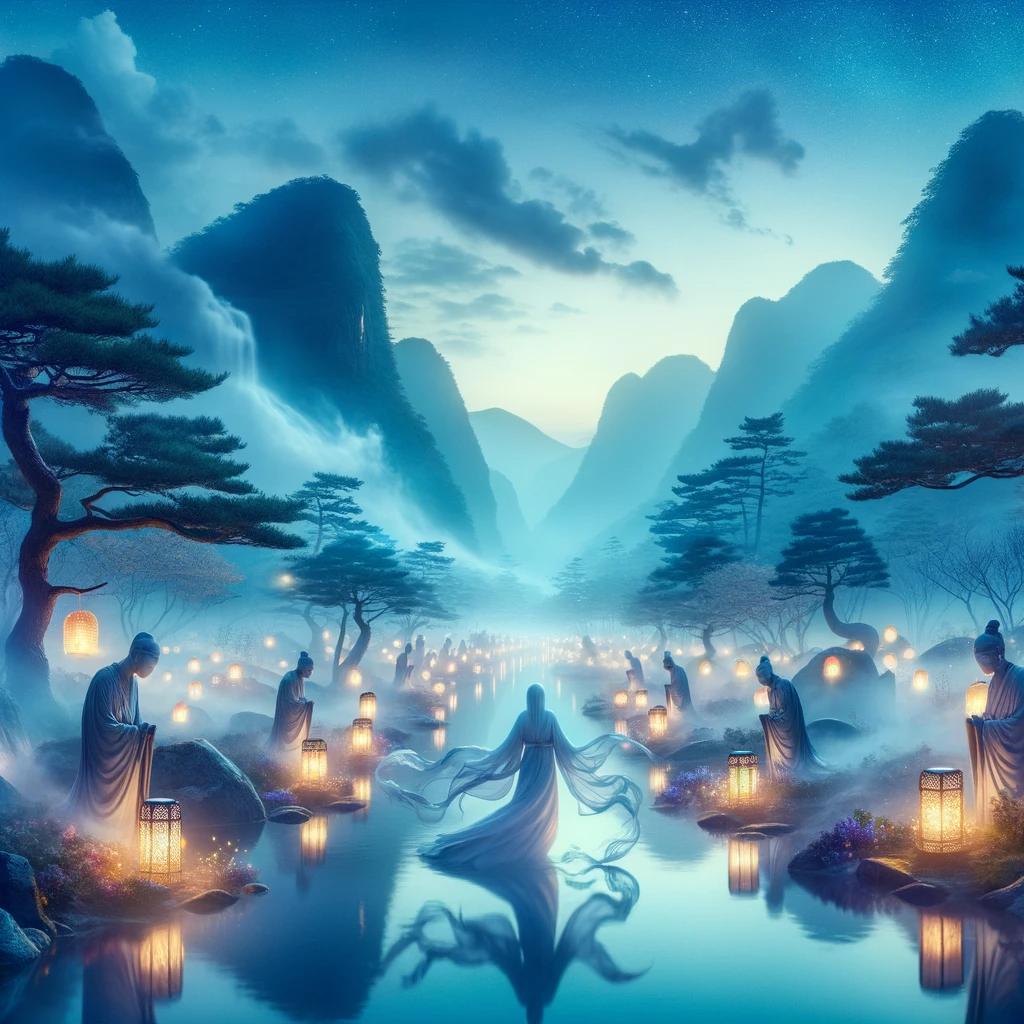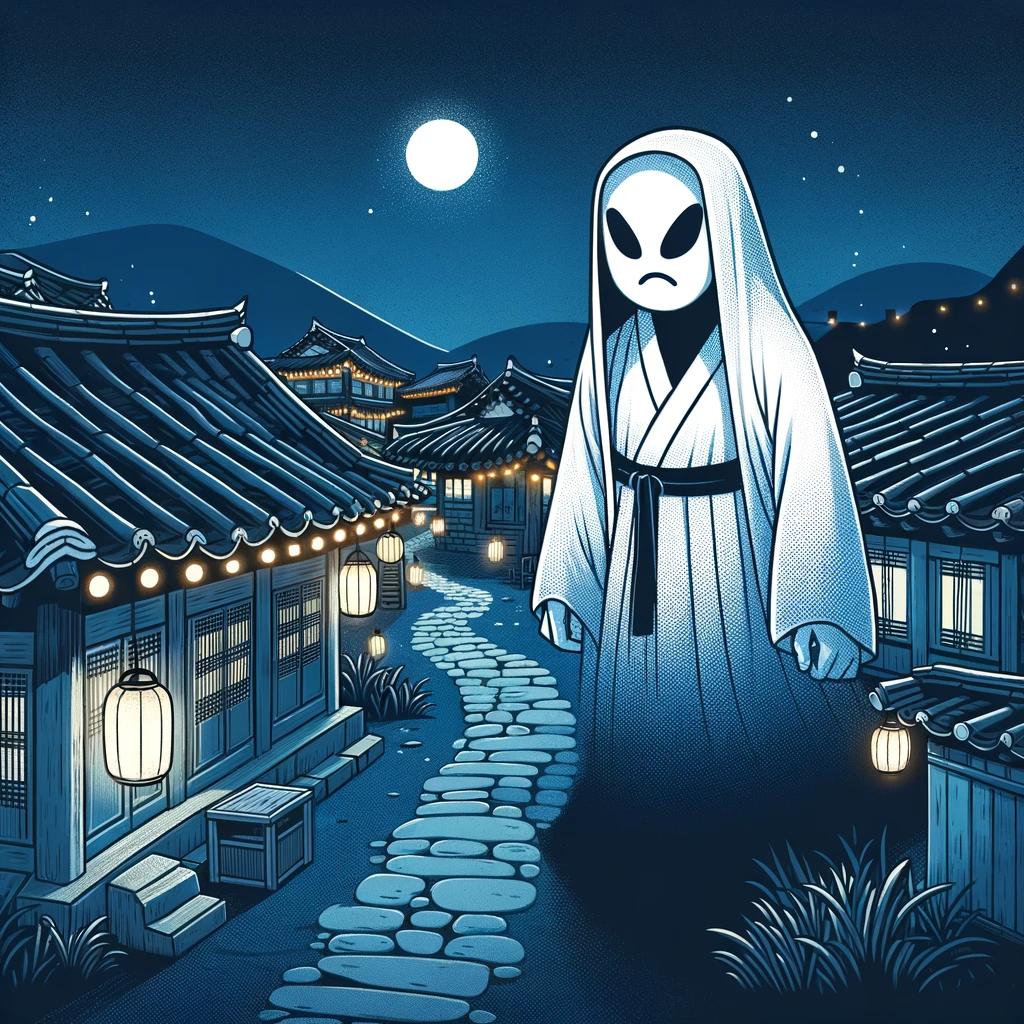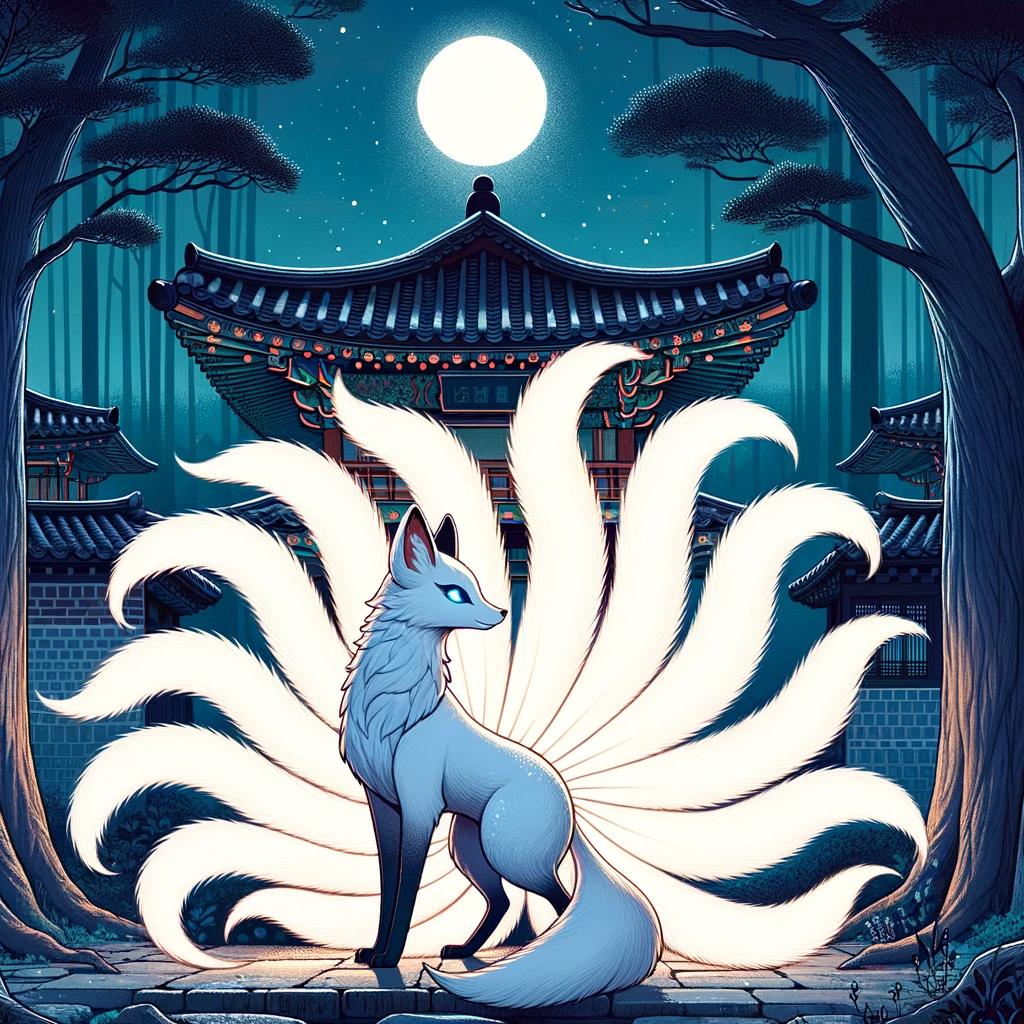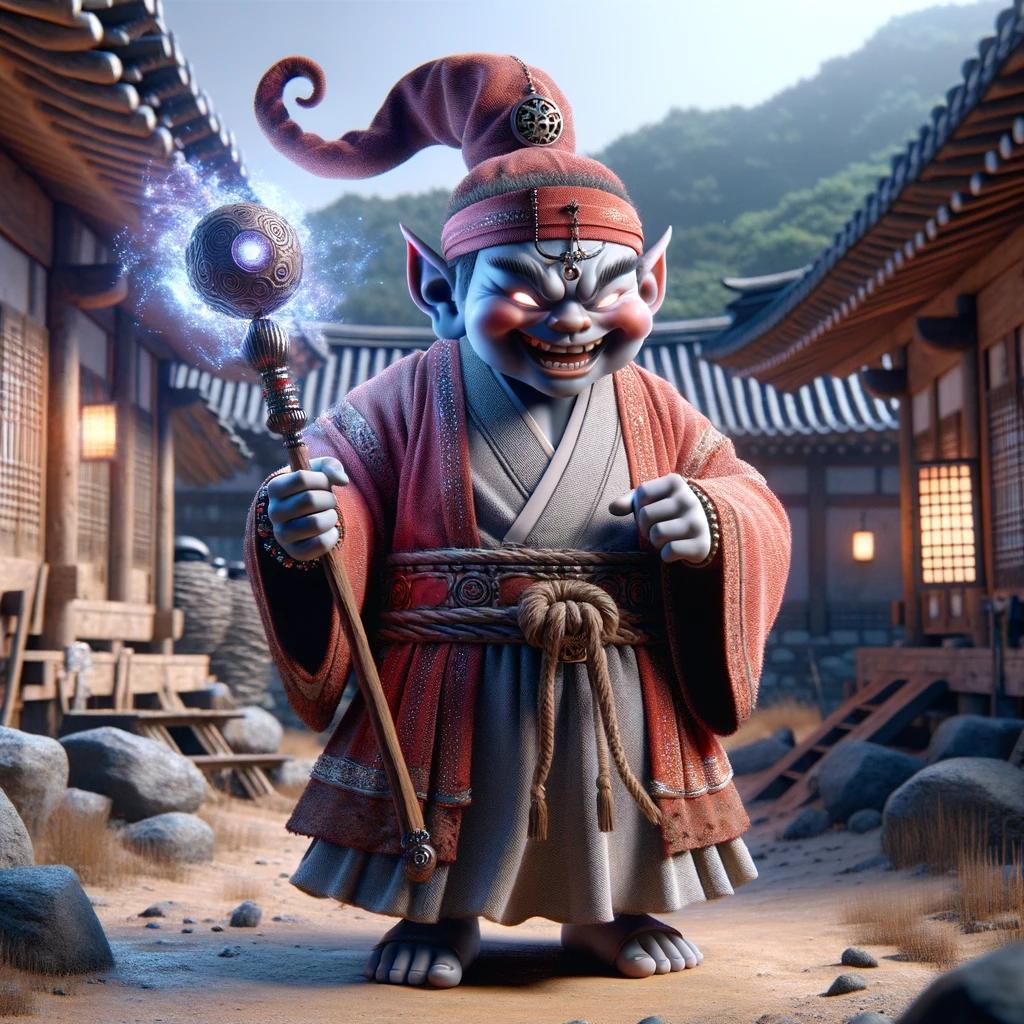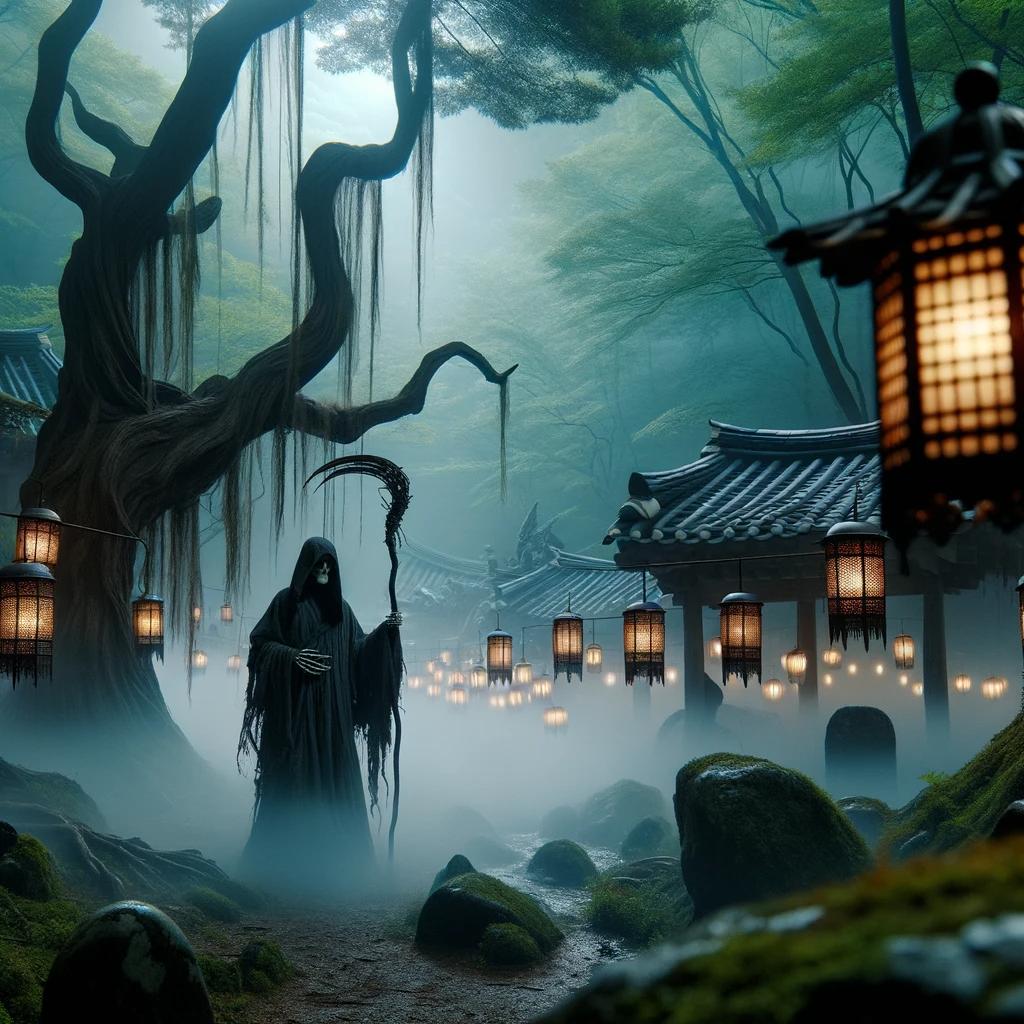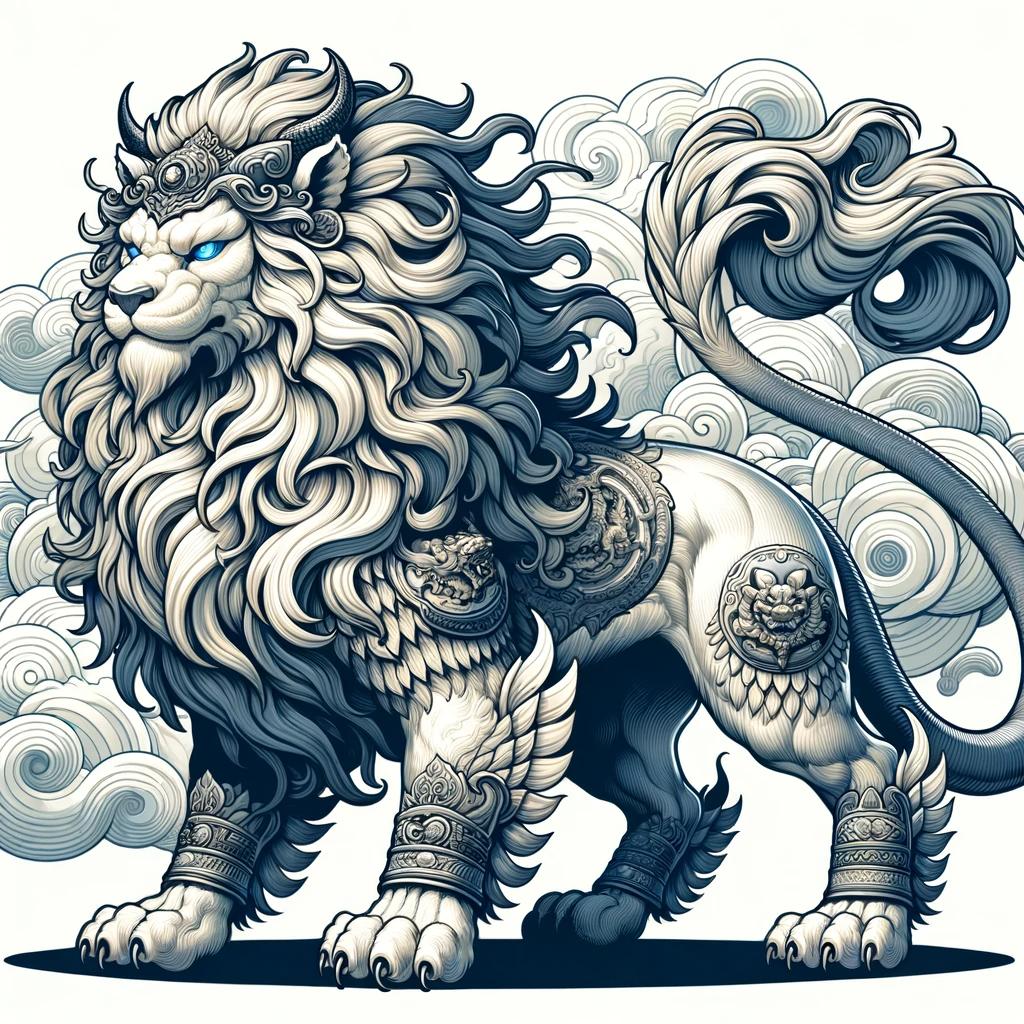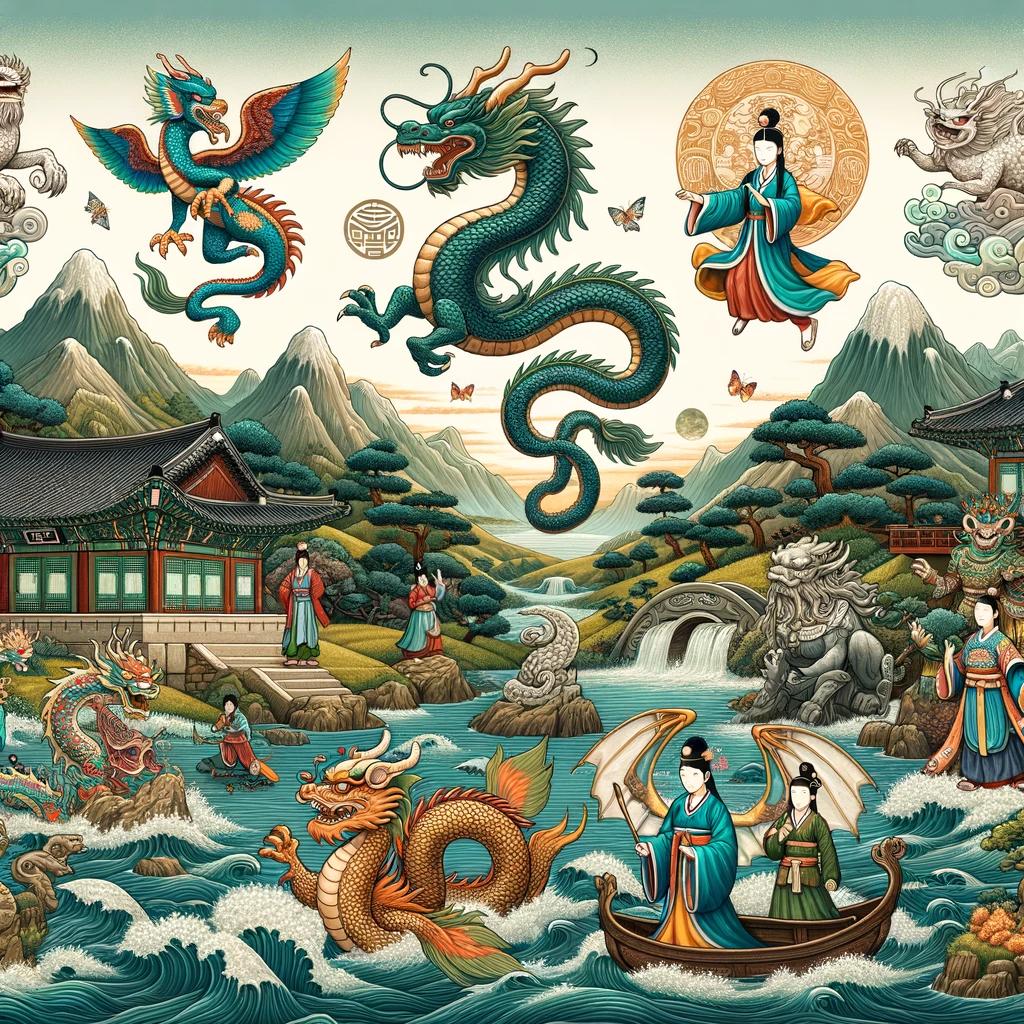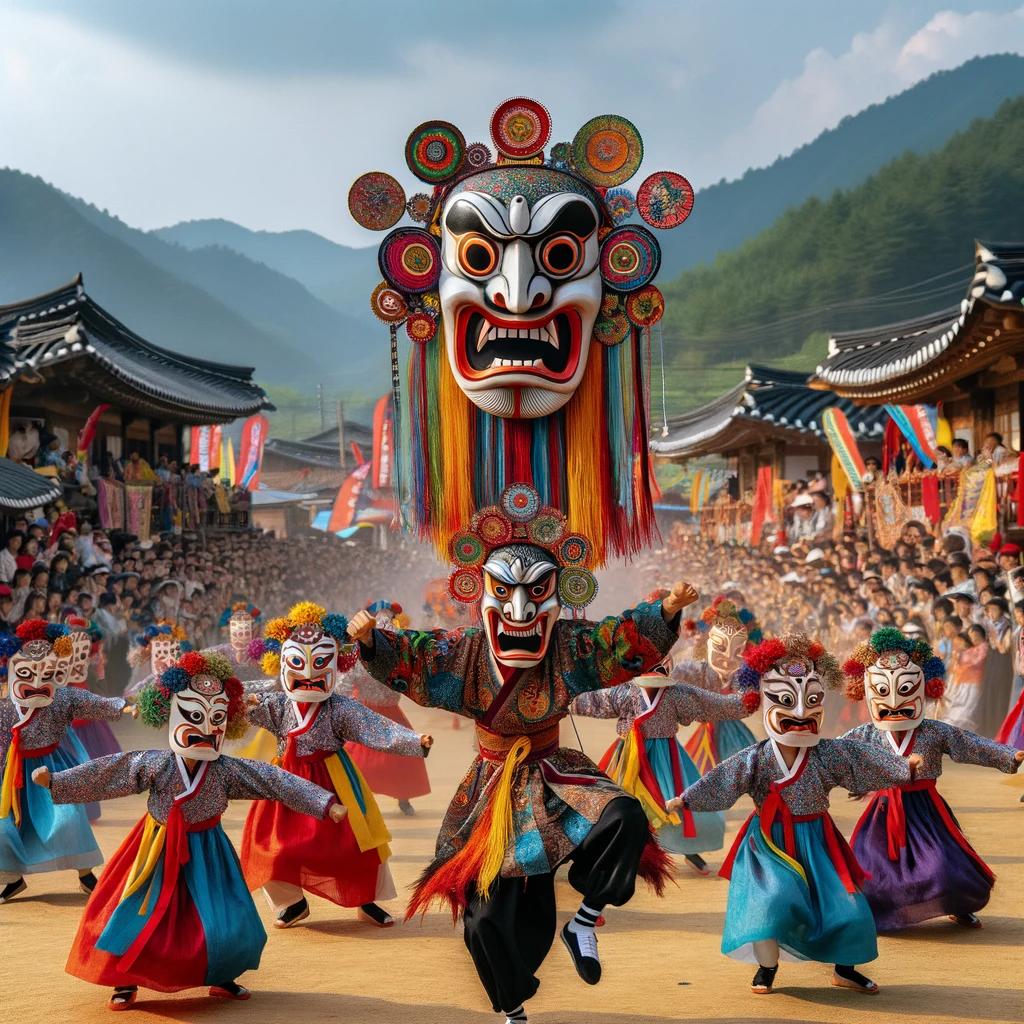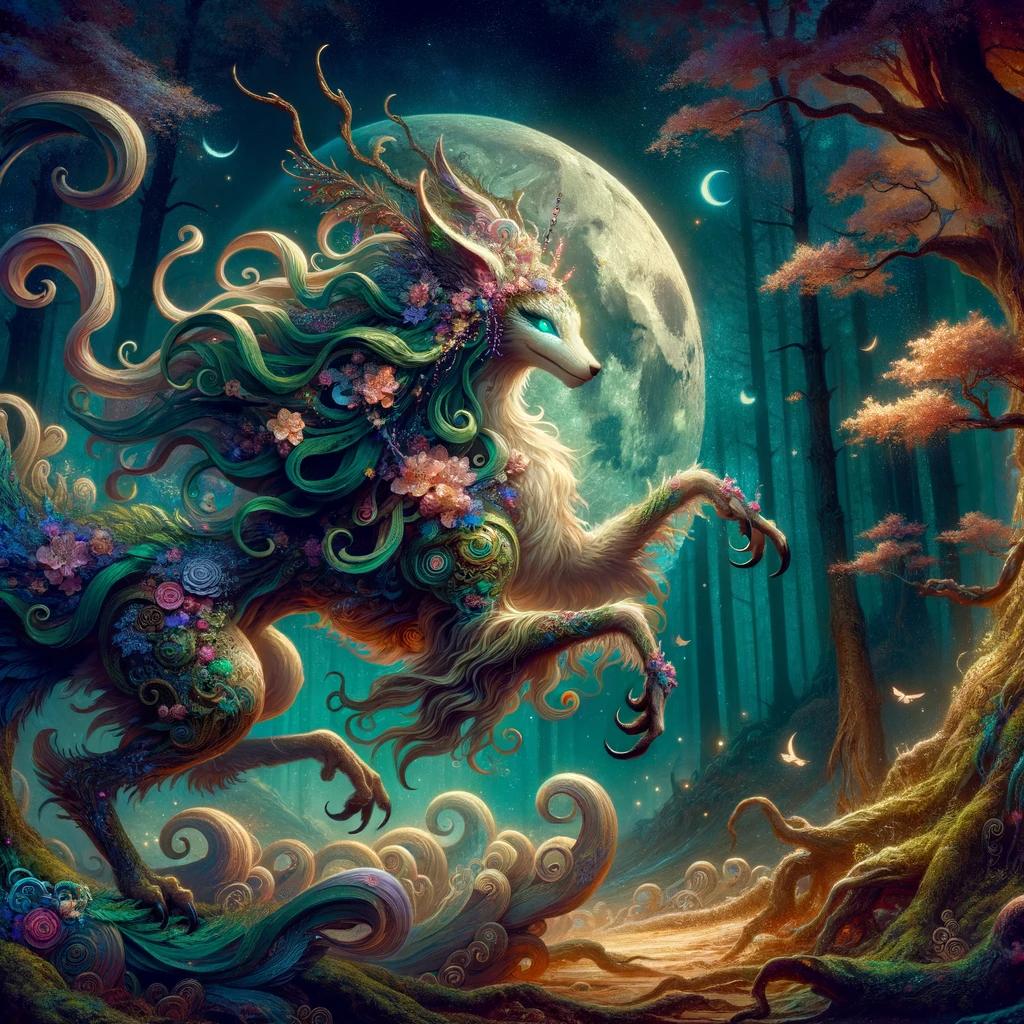Famous Korean Legends And Myths: Ancient Tales from Korea’s Rich Mythology
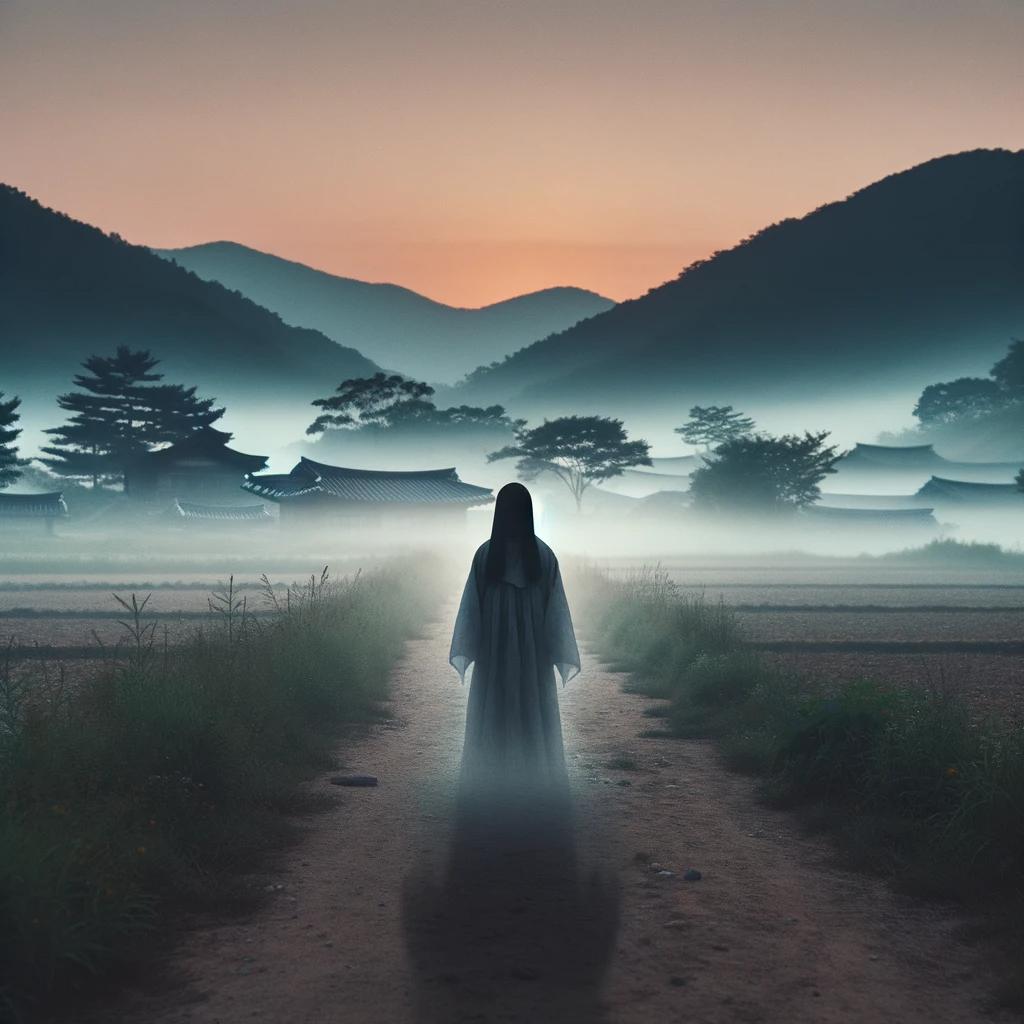
Famous Korean Legends And Myths are fascinating tales passed down through generations, offering insights into Korean history, culture, and beliefs. From celestial beings who created the world to mythical creatures like the Samjoko and the Gumiho, Korean mythology is filled with supernatural wonders.
Discover the legendary stories of Dangun, the founder of Gojoseon, and the significance of the Haetae in Seoul. Explore the influence of these myths in modern Korean culture, from K-dramas to traditional folklore.
Delve into the enchanting realm of Korean mythology and uncover its captivating legends.
The Origins of Korean Legends and Myths
The fascinating world of Korean mythology is filled with ancient tales and captivating stories that have been passed down through generations. These legends and myths are an integral part of Korean culture, providing insight into the history, beliefs, and values of the Korean people.
Creation Myth: Yul-Ryeo and Mago
According to Korean mythology, the creation of the world began with the appearance of two divine beings, Yul-Ryeo and Mago. Yul-Ryeo tragically met his demise, but Mago, the goddess, gave birth to two angelic men and two angelic women.
It was these celestial beings who brought life to the plants, animals, and birds that inhabit the Earth. They ruled over their heavenly castle called Magoseong, and Mago herself became the Earth, giving birth to nature as we know it.
The Legend of Dangun: Founder of Gojoseon
A significant myth in Korean mythology is the legend of Dangun, the founder of Gojoseon, considered the first kingdom in Korean history. Dangun was the son of Hwanung, the god of the sky.
Descending to Earth, he established the kingdom of Gojoseon, laying the foundation for the Korean nation. This myth holds great cultural significance and is taught in schools to educate the younger generations about their heritage.
These myths of creation and the origin of Gojoseon shed light on the ancient beliefs and cultural narratives that have shaped Korea’s history and identity.
Mythical Creatures in Korean Folklore
Korean folklore is rich with mythical creatures that have captivated imaginations for centuries. These creatures embody symbolism and cultural significance, each with their own unique stories and roles in Korean mythology.
The Samjoko: Symbol of Sun and Prosperity
One fascinating creature in Korean folklore is the Samjoko, a three-legged crow that represents the sun and prosperity. According to Korean mythology, the Samjoko resides in the sun and travels in the chariot of the sun god.
This majestic creature symbolizes power, fortune, and abundance in Korean culture.
The Korean Dragon: Water and Agriculture Guardian
The Korean Dragon, similar to its Chinese counterpart, is a revered figure associated with water and agriculture. It is believed to reside in rivers and seas throughout Korea. This mythical creature not only brings rainfall for bountiful crops but also safeguards the land and its people.
With its long beard and possession of the ‘Yeouiju’ orb, the Korean Dragon is distinctly recognized.
The Gumiho: The Nine-Tailed Fox
In Korean mythology, the Gumiho, also known as the Nine-Tailed Fox, is both captivating and dangerous. This mystical creature is associated with shape-shifting abilities, often taking the form of a beautiful woman to lure and prey upon unsuspecting men.
Legend has it that if a Gumiho manages to resist consuming human flesh for a thousand days, it can attain its human form, breaking free from its curse.
The Haetae: Guardian of Seoul
Considered the guardian of Seoul, the Haetae is a mythical creature with the body and head of a lion, along with scales and spines on its head.
It represents protection and safeguarding against evil spirits and malicious energies. As a symbol of the city, statues of Haetae can be found throughout Seoul, displaying its significance in Korean culture and folklore.
The Moon Rabbit: Symbol of Mid-Autumn Festival
Another prominent mythological creature in Korean folklore is the Moon Rabbit, also known as the Jade Rabbit. This creature is a symbol of the mid-autumn festival, also known as Chuseok. According to the legend, the Moon Rabbit creates the elixir of immortality on the moon, showcasing its association with longevity and the harvest season.
These mythical creatures in Korean folklore play essential roles in shaping the country’s cultural identity and beliefs. Each creature holds a special place in the hearts and imaginations of the Korean people, representing various aspects of nature, fortune, protection, and spirituality.
Supernatural Beings in Korean Legends
The world of Korean mythology is inhabited by a diverse array of supernatural beings, ranging from ghosts and spirits to deities and divine creatures. These legendary entities play significant roles in shaping the beliefs and culture of Korea.
Let’s explore some of these fascinating beings:
Ghosts and Spirits: Gwisin and Dokkaebi
Gwisin and Dokkaebi are prominent figures in Korean folklore, representing the spiritual realm. Gwisin refers to the souls of the deceased who remain on Earth. They are believed to inhabit places where they had unfinished business or unresolved emotions.
Dokkaebi, on the other hand, are mischievous supernatural creatures often depicted as goblin-like beings. They possess great powers and are known for their penchant for tricks and pranks.
Jeosung Saja: The Grim Reaper
A haunting figure in Korean mythology, Jeosung Saja is the Grim Reaper or the Korean version of the Angel of Death.
Jeosung Saja is responsible for guiding the souls of the deceased to the afterlife and enforcing the laws of death. Often depicted as a hooded figure carrying a sickle, Jeosung Saja strikes fear into the hearts of mortals and represents the cycle of life and death.
Deities and Divine Beings in Korean Mythology
Korean mythology is replete with various gods and goddesses who are revered and worshipped. These divine beings hold significant sway over different aspects of life and nature. From Hwanung, the god of the sky, to Mago, the earth goddess and creator, each deity contributes to the rich tapestry of Korean mythology.
Other notable deities include gods of fertility, wealth, and fortune, emphasizing the importance of these aspects in the Korean belief system.
In summary, supernatural beings play a central role in Korean legends and myths.
They provide a glimpse into the intricate belief systems and cultural values of the Korean people. From ghosts and spirits to divine deities, these legendary figures continue to captivate and inspire generations with their mystical presence.
Famous Korean Myths and Legends
Explore the captivating world of Famous Korean Myths and Legends, which have been passed down through generations. These ancient tales are deeply rooted in Korean culture and offer insights into the beliefs, values, and history of the Korean people.
The Legend of the Three Heavenly Seals
One of the most renowned myths in Korean folklore is the Legend of the Three Heavenly Seals. This epic tale tells the story of three brave warriors who set out on a perilous journey to obtain the sacred seals that hold immense power.
Their quest takes them through treacherous landscapes and challenging tests of courage as they battle mythical creatures and face the forces of darkness.
Tales of Sun Gods and Moon Goddesses
In Korean mythology, powerful deities govern the celestial bodies. The tales of Sun Gods and Moon Goddesses depict their divine roles and the celestial dynamics that shape the world. Discover the captivating stories of the sun deity and the moon goddess, their interactions, and the significance they hold in Korean culture.
The Forbidden Love of Humans and Deities
Korean mythology is sprinkled with stories of forbidden love between mortals and divine beings. These tales explore the complexities of relationships across different realms, highlighting the challenges and consequences that arise when love bridges the gap between humans and deities.
Experience the emotional dramas and learn about the moral lessons embedded within these enchanting narratives.
Legendary Heroes and Heroines in Korean Folklore
In the rich tapestry of Korean folklore, legendary heroes and heroines emerge to defend their people, overcome adversity, and challenge societal norms. These courageous figures become symbols of resilience, honor, and sacrifice.
Discover the legendary tales of heroes and heroines, such as the famous warrior General Choi Young or the valiant female warrior, Hwa Rang.
Immerse yourself in the fascinating world of Famous Korean Myths and Legends, where bravery, love, and heroic deeds intertwine to form the fabric of Korean cultural heritage.
Influence of Korean Myths and Legends in Modern Culture
Korean Mythology in K-dramas and Pop Culture
Korean myths and legends have found their way into the vibrant world of K-dramas and pop culture, captivating audiences both within Korea and around the globe. These enchanting stories and mythical characters provide a rich source of inspiration for writers, directors, and artists, shaping the narratives and themes of popular television shows, movies, and music.
In K-dramas, elements of Korean mythology often serve as the foundation for epic tales of love, heroism, and fate. From the intertwining destinies of human and divine beings to the struggles between good and evil, these mythical narratives add depth and intrigue to the storytelling.
Characters such as Gumiho, the nine-tailed fox, or the powerful Samjoko, symbol of prosperity, have become iconic figures in contemporary K-drama culture, immersing viewers in a world where ancient legends come to life.
Korean pop culture, including music and fashion, also draws inspiration from Korean mythology. Music videos often incorporate visual references to mythical creatures and enchanted realms, creating an otherworldly experience for fans.
Traditional and modern fashion designers often incorporate motifs and symbols from Korean myths, paying homage to the country’s rich cultural heritage.
Traditional Folklore and its Significance Today
Beyond K-dramas and pop culture, traditional Korean folklore continues to hold a special place in contemporary society. This rich tapestry of legends and myths is celebrated during festivals, cultural events, and educational programs, passing down the stories and values to younger generations.
Traditional art forms, such as storytelling, music, and dance, preserve and revive these timeless tales, ensuring their continued relevance. Folklore performances featuring mythical characters and epic sagas captivate audiences, fostering a sense of pride and connection to Korea’s cultural heritage.
The significance of Korean myths and legends also extends beyond entertainment and cultural appreciation. They serve as a source of inspiration for literature, poetry, and visual arts, allowing artists to explore and reinterpret age-old narratives in contemporary contexts.
Moreover, these stories provide a spiritual and moral compass, offering insights into the human experience, the nature of good and evil, and the importance of harmony with the natural world.
In conclusion, the influence of Korean myths and legends is palpable in modern culture, from the realms of K-dramas and pop music to the preservation of traditional folklore.
These captivating tales continue to inspire and captivate audiences, connecting them to the rich cultural tapestry that shapes Korean identity in the 21st century.
- Mythical characters inspire K-drama plots and add depth to storytelling.
- Korean pop culture incorporates visual references to mythical creatures.
- Traditional folklore is celebrated during festivals and cultural events.
- Traditional art forms, such as storytelling and dance, preserve and revive myths.
- Korean myths and legends inspire literature, poetry, and visual arts.
- These stories offer spiritual and moral insights into the human experience.
Exploring Korean Mythology: Learning Resources and Popular Books
Books and Reference Materials on Korean Legends
Delve deeper into the fascinating world of Korean mythology by exploring a variety of books and reference materials.
These resources provide valuable insights into the rich tapestry of Korean legends and myths. Whether you’re a mythology enthusiast or a student of Korean culture, these books offer a wealth of knowledge:
- Korean Mythology: A Captivating Guide to Korean Folklore, Myths, Fairy Tales, and Legends
- Korean Mythology 101: From Dragons to Goblins, Your Guide to Vengeful Gods and Beguiling Spirits
- The Book of Korean Mythology: The Primordial Beginnings, Legendary Heroes, and Mythical Beasts of Korea
- Korean Mythology: Gods and Heroes of Ancient Korea
These books provide in-depth accounts of various Korean myths and legends, shedding light on the cultural significance and symbolism behind each story.
They are essential resources for anyone interested in exploring the depths of Korean mythology.
Online Resources and Websites for Mythology Enthusiasts
In addition to books and reference materials, online resources and websites offer a convenient way to further explore Korean mythology. Whether you’re looking for academic articles, folklore databases, or interactive platforms, these online resources can satisfy your curiosity:
- Korean Mythology Society: Dedicated to the study and promotion of Korean mythology
- Mythopedia: An online encyclopedia of world mythology, including a section on Korean myths and legends
- Seoul Folklore Research Institute: Provides a comprehensive collection of Korean folklore studies and research materials
- K-MYTH: A website that offers a vast range of Korean mythology resources, including articles, ebooks, and illustrations
These online platforms and websites serve as valuable repositories of knowledge, allowing mythology enthusiasts to delve deeper into the captivating realm of Korean legends and myths.
From scholarly resources to interactive forums, they provide a wealth of information for those eager to expand their understanding of Korean mythology.
.

